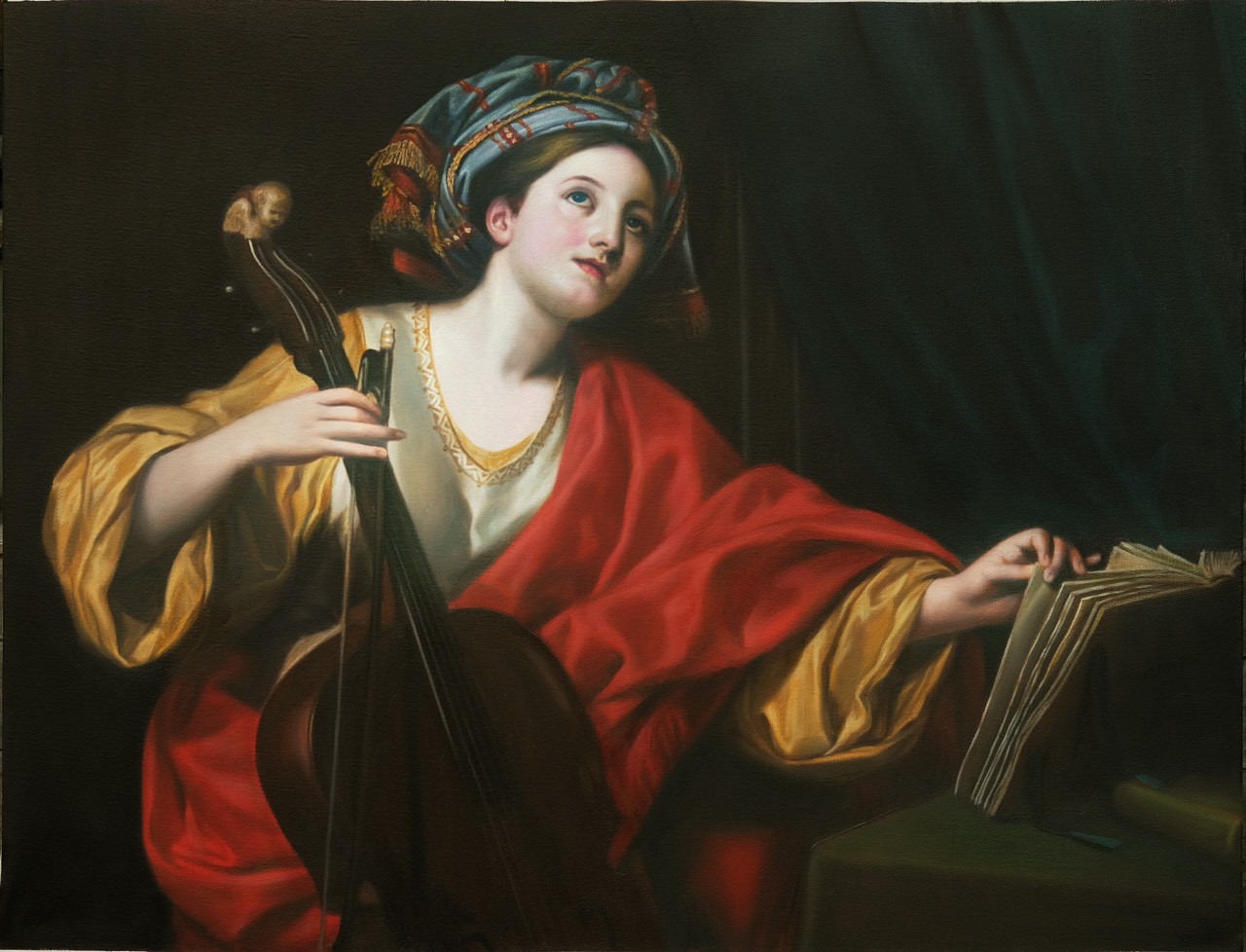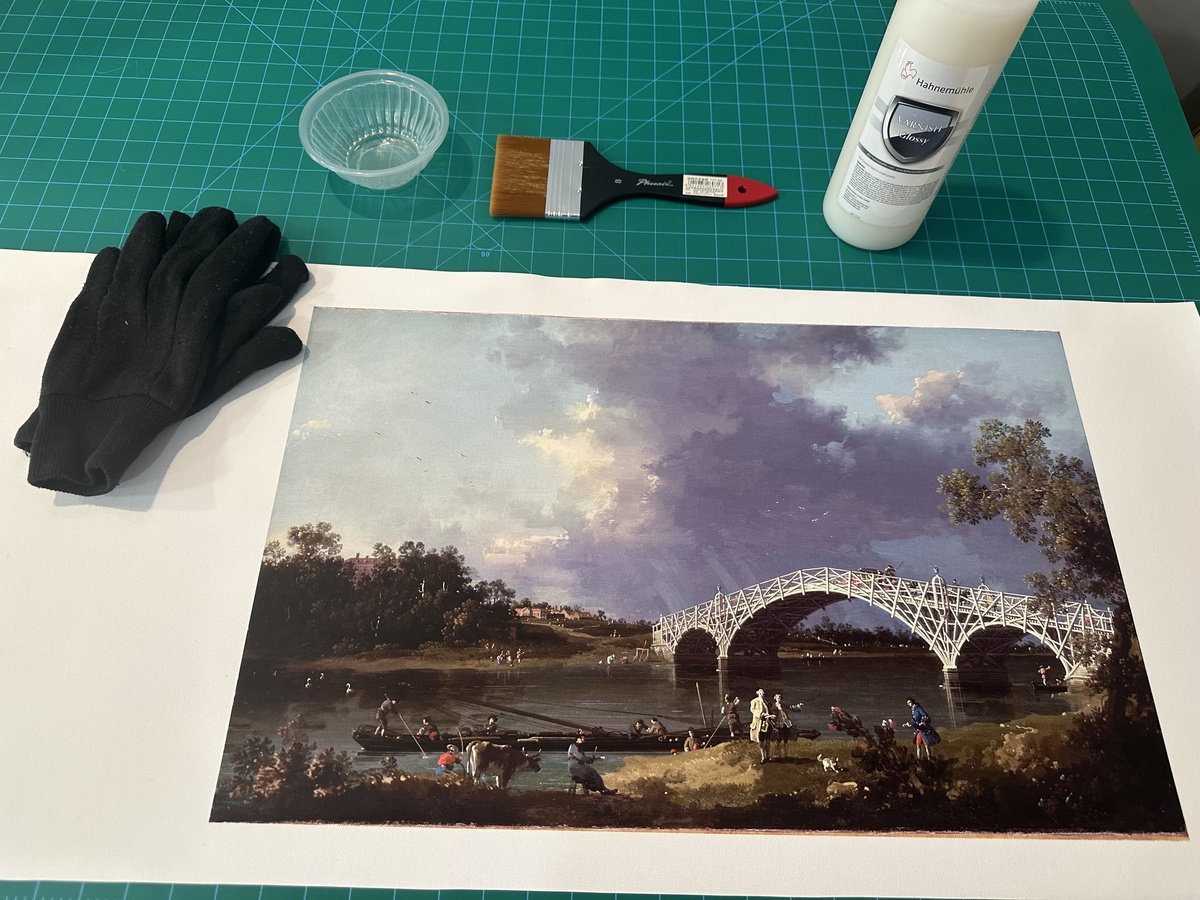

The period that interests us here is the Classic period, and you will find all the artworks from this particular era available as Classic art prints on canvas in our shop.
Find your Classic print (classified by Artist)
Reproducing classic art through prints on canvas is a delicate and intricate process that demands meticulous techniques and methods. It involves a harmonious blend of canvas printing techniques and artwork reproduction methods to capture the essence of timeless masterpieces. Creating vintage art prints on canvas requires attention to detail and an in-depth understanding of the original artwork's unique characteristics. Luckily, with 25 years as artists painters, replicating artworks with oil painting, we have all the necessary experience to do just that.
A beautiful printed reproduction is an art in itself: The process of replicating classic art prints on canvas is akin to breathing new life into historical treasures, ensuring their enduring legacy for generations to come. Our inks are guaranteed 200 years, and the top-shelf varnish we use protect from exterior deterioration.
Digital reproduction techniques play a pivotal role in replicating classic artwork with precision and accuracy. Utilizing advanced software and cutting-edge technology, we employ digital scanning and reproduction methods to create faithful reproductions of the original artwork. This process ensures that every intricate detail and nuance of the masterpiece is captured, preserving its authenticity for future generations.
We print with an Epson printer, using original inks of the highest quality. The printer is calibrated for each print separately, to ensure a maximum color adequacy.
In addition to digital techniques, a traditional method of oil painting is revered for its ability to replicate classic artwork: I am talking about hand-painted oil painting replicas. Skilled artisans painstakingly reproduce timeless masterpieces using this traditional processes, infusing each reproduction with a sense of craftsmanship and artistry reminiscent of the original creation. The oil painting reproduction process is of course time-consuming, and much more expensive, compared to its print equivalent.
The fusion of digital and traditional reproduction methods allows for the preservation of classic art while embracing technological advancements, ensuring that these cultural treasures endure the test of time. Basically, we print an artwork on a high-quality canvas, then enhance it with oil painting.
Traditionally, an artist would draw the outlines of the artwork, then color is with oil paint. We do things a little differently when reproducing an oil painting. We first print the artwork at the desired size, and that print will provide the outline without needing a slow drawing process. Then, once the print is done, we enhance it with oil paint, reproducing each detail manually, thus conserving the original feel of the painting, including the brushstrokes.

Digital canvas printing is a modern marvel that enables the faithful reproduction of classic artwork on canvas. This cutting-edge technique leverages digital printing technology to transfer digital images onto canvas using specialized printers and inks. The process ensures high-quality, detailed prints that capture the essence and intricacies of the original masterpiece.

Reproducing art with precision: Digital canvas printing breathes new life into classic artwork, allowing for the creation of stunning reproductions with remarkable accuracy and attention to detail. Every detail of the original artwork is there, with a perfect color matching. That is the magic of top quality printing.
When it comes to creating classic art prints on canvas, the selection of the right canvas material is paramount. The choice of canvas can significantly impact the overall quality and longevity of the artwork. Here are some key considerations when selecting the ideal canvas material:
Texture and Durability: Opt for a canvas with a texture that complements the style of the artwork. Additionally, durability is crucial to ensure that the print maintains its integrity over time.
Visual Appeal: The quality of the canvas directly influences the visual appeal of the artwork. A high-quality canvas enhances the overall aesthetic and ensures a professional finish.
Our canvas of choice is a matte 380 GSM, 100% cotton, canvas. It gives a real artwork feel to your print, and is easy to stretch on stretchers bars.
The selection of ink and pigments plays a pivotal role in determining the vibrancy and longevity of classic art prints. Here's why choosing archival-quality inks and pigments is essential:
Color Vibrancy: Archival-quality inks and pigments are formulated to retain their color vibrancy over time, ensuring that the artwork maintains its visual allure.
Longevity: The choice of inks and pigments directly impacts the longevity of classic art prints. By opting for high-quality materials, you can ensure that your prints stand the test of time while retaining their original beauty.
We use only Epson certified inks, guaranteed 200 years by the company.
Achieving precise color matching and calibration is paramount in the reproduction of classic artwork on canvas. These intricate printing techniques are essential to ensure that the printed colors faithfully resemble the original masterpiece. Advanced methods and technology are employed to match the hues meticulously, tones, and shades present in the original artwork, capturing its essence with remarkable accuracy.
The process involves sophisticated color calibration tools that enable experts to fine-tune the printing process, ensuring that each print reflects the true colors intended by the artist. By meticulously calibrating the color reproduction, every subtle nuance and detail of the original artwork is accurately translated onto the canvas, preserving its visual integrity for years to come.
Enhancing the texture and finish of canvas prints is a meticulous art form that adds depth and authenticity to classic art reproductions. Through detailed printing methods, various techniques are utilized to replicate not only the visual aspects but also the tactile qualities of the original artwork.
Artisans employ specialized processes to recreate the texture and brushwork of the masterpiece, ensuring that each print captures the tactile essence of the original creation. By enhancing both visual and tactile elements, these intricate techniques breathe new life into classic art prints on canvas, reviving their timeless beauty with unparalleled precision.
Preservation techniques are employed to shield the revived masterpieces from environmental factors that could potentially compromise their longevity. This involves utilizing archival-grade materials for framing and protective coatings to safeguard the prints against light exposure and humidity. By implementing these preservation strategies, restoration experts play a crucial role in upholding the cultural significance of classic art prints on canvas for years to come.
We use a special UV varnish to coat your print on canvas, and preserve it from degradation - in normal conditions. At Poppins'Shop, we go the extra mile to make sure that your artwork will be beautiful and last long.
Proper framing and display techniques are essential elements in showcasing classic art prints on canvas. Careful presentation not only enhances the visual impact of the artwork but also contributes significantly to its longevity.
When it comes to displaying these timeless artworks, choosing the right frame is more than just an aesthetic decision—it's a means of protection. Conservation framing techniques are employed to ensure that the prints are shielded from potential damage caused by environmental factors such as light exposure, fluctuations in humidity, and air pollutants. Additionally, UV-protective glazing is utilized to safeguard against fading due to sunlight exposure.
Beyond preservation considerations, thoughtful presentation elevates the overall viewing experience of classic art prints on canvas. Proper lighting and positioning further enhance the visual allure of these masterpieces while creating an immersive viewing environment for art enthusiasts. By carefully considering every aspect of display and presentation, curators and collectors alike contribute to honoring and perpetuating the legacy of these revered artworks.
Mastering the art of creating classic art prints on canvas is a testament to precision, dedication, and a deep appreciation for the cultural significance of timeless masterpieces. It involves a harmonious blend of traditional and modern techniques, each contributing to the preservation and revival of historical treasures.
Preserving Heritage: The meticulous process of mastering classic art prints on canvas is not merely a technical endeavor; it's an act of preserving heritage and perpetuating the legacy of revered artworks for future generations to cherish.
To achieve mastery in this craft, artisans and experts immerse themselves in the intricate printing processes, ensuring that every brushstroke, color nuance, and texture is faithfully represented. By embracing both time-honored methods and cutting-edge technology, they breathe new life into vintage art prints on canvas while upholding their cultural significance.
Embracing the art of reviving classic art on canvas fosters a renewed appreciation for historical and cultural treasures. It allows art enthusiasts to experience these timeless masterpieces in a tangible form, fostering a deeper connection with the rich tapestry of human creativity throughout history.